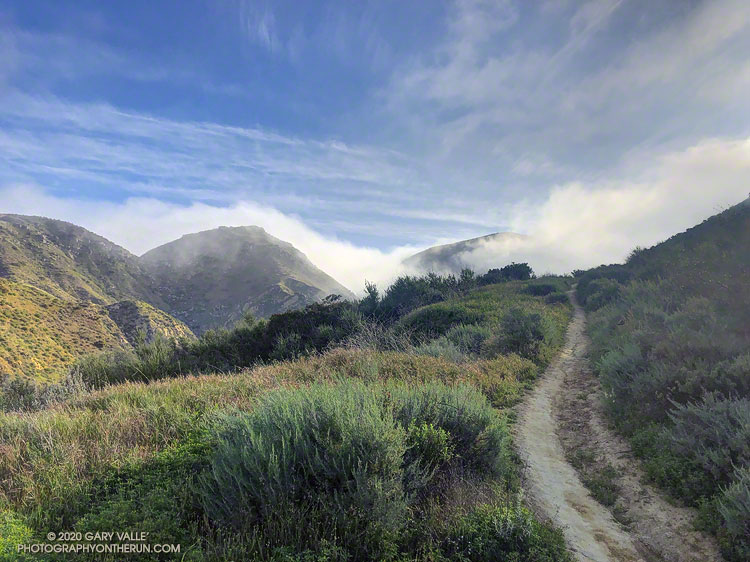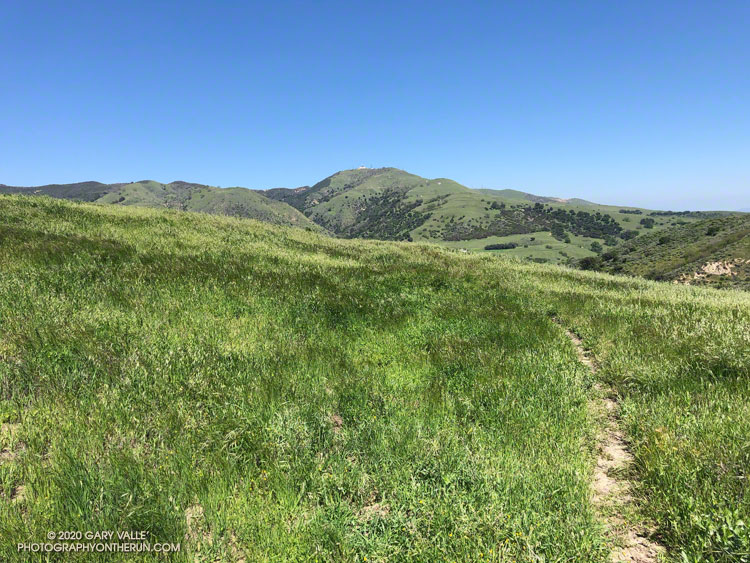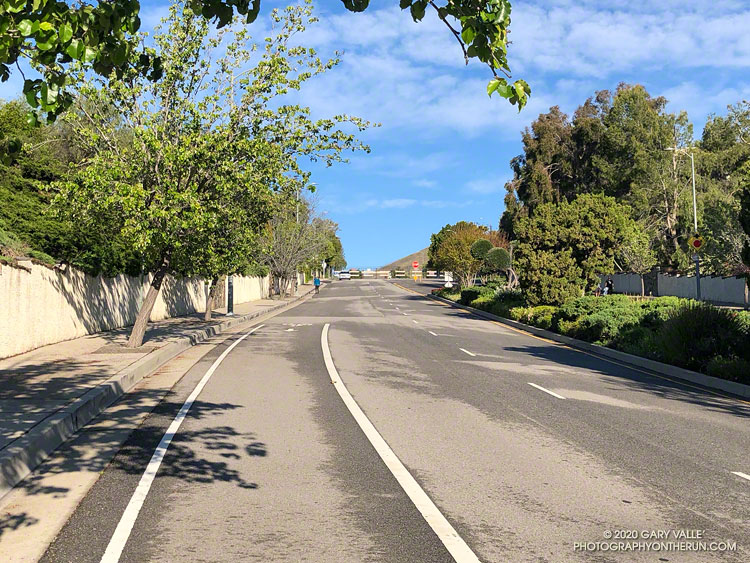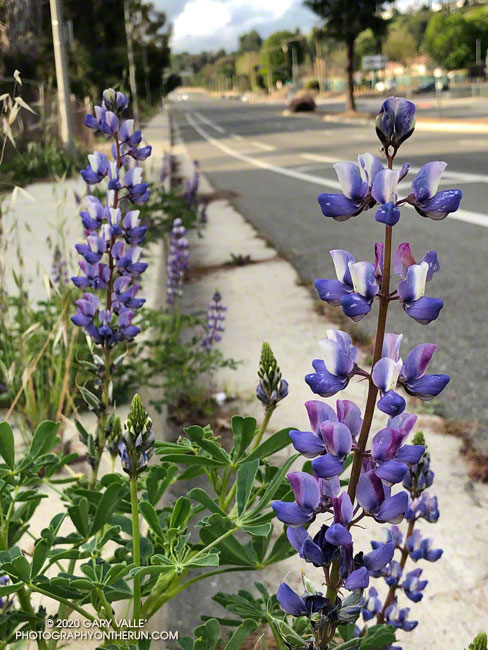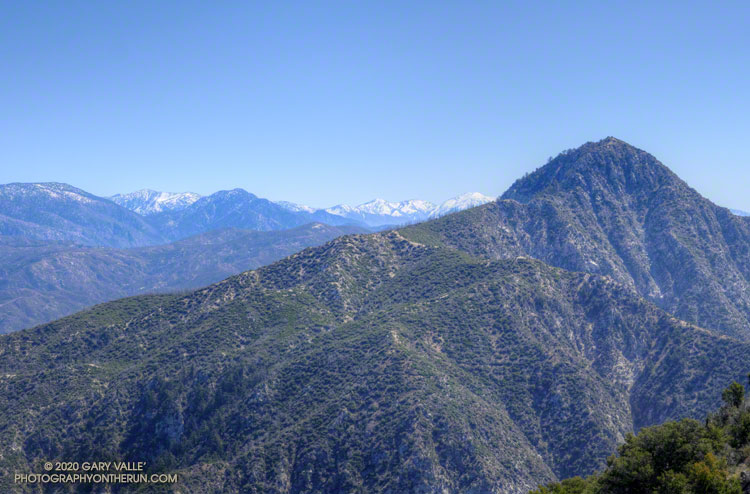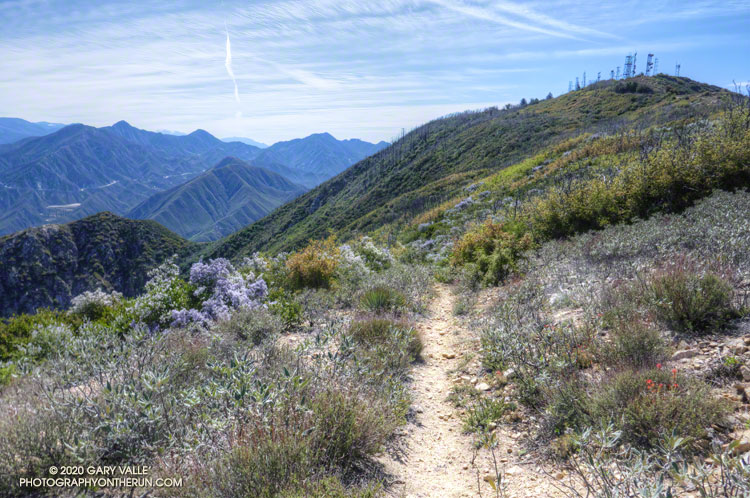
Update April 4, 2021. Wow! What a difference from last year! The Stone Canyon Trail was in great shape on this morning’s hike/run. All the dead limbs/small trees had been removed. All the washouts had been repaired. A ton of brush had been cleared. I didn’t even get my shoes wet crossing Big Tujunga Creek because there was a causeway of large rocks across the creek. Many thanks to whoever did the work on the trail!
At the deepest part of the creek, the cold water reached mid-thigh. I’d futzed around looking for a way to rock hop across slowly-flowing Big Tujunga Creek, but didn’t find one.
With squishy shoes, I followed the trail eastward along the creek. A little past Stone Canyon wash, the trail turned toward Mt. Lukens and started to climb.
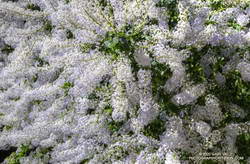
The Stone Canyon Trail is one of the trails on my list of trails less-traveled. Today, the trail choice had been between the Stone Canyon Trail and Condor Peak Trail. Recalling the difficulty of the Condor Peak Trail, I thought it would be better to do Mt. Lukens first, and save Condor Peak for later.
As I worked up the trail, I marveled at its condition. It was in surprisingly good shape! It had been groomed relatively recently, and I mentally thanked the person or group that had taken care of the trail. With a clear trail and cool morning temperature, it felt good to push the pace up the steep trail.
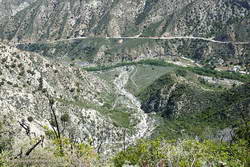
The last time I’d done this route was in November 2016. That outing followed five years of drought. With growth suppressed, the upper half of the trail was only moderately overgrown, and I did not see any poison oak. Ever the optimist, I thought today’s conditions might be even better.
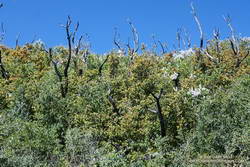
Not this time. I don’t know if Winter rains or the pandemic had intervened, but about halfway up the peak, the trailwork abruptly ended. The upper half of the trail was badly overgrown, and at inconvenient times Spring-green poison oak lined the trail. In a few places, fallen scrub oak trees — burned in the Station Fire — were mixed in with the brush. Where the 2016 ascent had been after a drought, today’s followed a wet period in which three out of the past four years have had normal or above-normal rainfall.
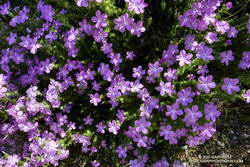
With care, patience, and a bit of bushwhacking, I eventually reached the top of the Stone Canyon Trail and the old dirt road on the west side of the peak. A few minutes later I stood alone on the summit of Mt. Lukens. I had not seen anyone on the ascent and would not encounter anyone on the way down.
Here’s a Google Earth image overview of the Stone Canyon Trail and a 3D Cesium interactive view that shows a GPS track of the route up and down the Stone Canyon Trail on Mt. Lukens. The view can be zoomed, tilted, rotated, and panned. Placemark and track locations are approximate and subject to errors.
Related post: Mt. Lukens, Then and Now

